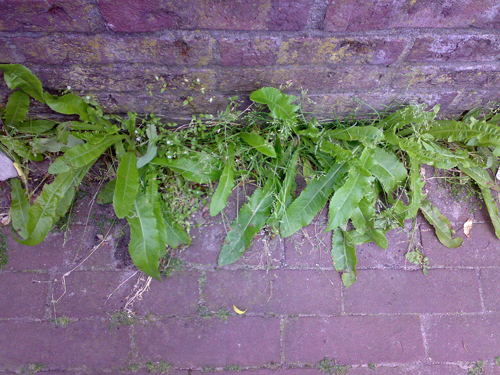Martha Díaz-Betancourt at alii, Weeds as a future source for human consumption, Veracruz, Mexico: Instituto de Ecologia, 2008.

Mole lettuce and chickweed, Admiral de Ruyterweg, Amsterdam
Weeds as a future source of human consumption is an article which discusses how the proportion of edible weeds communities increases considerably in anthropic environments. Edible weeds, however, are scarcely used, and weed gathering is more of a weekend curiousity than a regular source of food supply. The article argues that common weeds such as field mustard, sorrel, plantago, black nightshade prove to be an interesting resource in small to large cities where they may provide supplementary food.
Interesting to read also that weeds were a common past source of human consumption: since the Paleolithic era, plants have sustained the hunting and gathering peoples. While since the invention of food tools and agriculture (with the Neolithic period), the prevailing knowledge about edible species was lost. Two well-preserved mummies found in Denmark provided interesting information on food habits during the Iron Age showing that meals contained a diet much more diversified than that of contemporary diet with 66 different plant taxa.